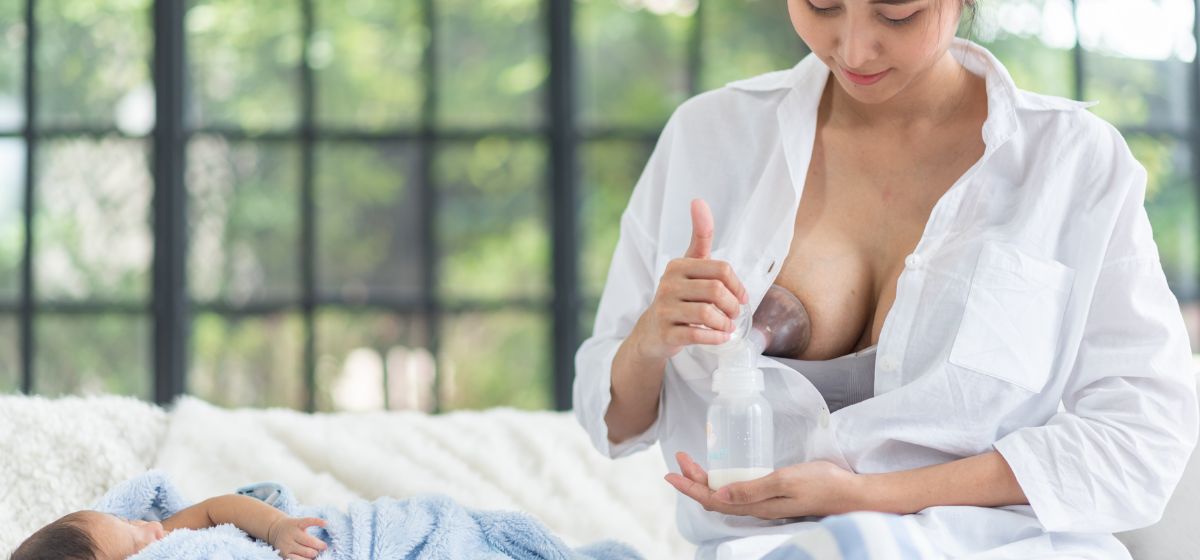Most health insurance plans are required to cover nursing equipment and supplies under the Affordable Care Act. You can obtain a quality breast pump at little to no cost through a straightforward qualification process with a Durable Medical Equipment (DME) provider like Aeroflow Breastpumps, which will help you verify your coverage, submit the necessary paperwork on your behalf, and show you all your insurance-covered options.
Are you a new or expecting mom wondering how to navigate insurance coverage for essential nursing equipment? Understanding your coverage options and the qualification process can feel overwhelming while you're preparing for baby, but we've simplified the entire journey for you.
How to Get a Breast Pump Through Insurance: Step-by-Step Process
Getting covered nursing equipment through your insurance provider involves three simple steps:
Step 1: Provide Your Insurance Information
Start by filling out our insurance qualification form.
Step 2: We Verify Your Coverage
Once you've filled out our form, we will contact your insurance company to verify your specific benefits and coverage details. We'll also submit all required paperwork on your behalf.
Step 3: Select Your Motherhood Essentials!
Once coverage is confirmed, you'll receive information about which breast pumps, pregnancy support essentials, classes, and supplies are covered by your insurance. Breast pump options may include:
-
Standard plug-in and rechargeable battery models
-
Wearable and hands-free models
-
Hospital-grade rental units (when medically necessary)
-
Manual options for occasional use
Additionally, a healthcare provider will need to write a prescription for your nursing equipment. This can be completed by:
-
Your OBGYN
-
Primary care doctor or healthcare provider
-
Midwife
-
Nurse practitioner
-
Baby's pediatrician (if postpartum)
Once selected, your equipment will ship directly to your home at no cost.


Understanding Your Insurance Coverage for Nursing Equipment
Here's what you need to know about the different ways you can obtain a breast pump through insurance.
Coverage Under the Affordable Care Act
Since 2010, the Affordable Care Act has required most insurance plans to provide breastfeeding support and services for pregnant or nursing mothers. This coverage includes medical equipment, ongoing support services, and some pregnancy and breastfeeding accessories and supplies.
According to Jennifer Jordan, Vice President of Mom & Baby Division at Aeroflow Breastpumps, "The ACA provision for nursing support has been transformative for new mothers. It ensures access to essential equipment that supports successful breastfeeding outcomes and maternal health."
What Your Insurance Plan May Cover
Coverage varies by provider, but eligible benefits often include:
-
Quality breast pumps (including electric breast pumps and manual devices)
Timing of Coverage
When you can receive your equipment depends on your specific insurance guidelines:
-
During pregnancy: Most plans allow ordering as early as the third trimester
-
30 days before due date: Common shipping timeframe for many providers
-
After birth: Some plans require your baby be born before shipping
-
Up to one year postpartum: Extended eligibility window for most insurers


Types of Covered Pumping Equipment
Nursing mothers can choose from a range of breast pumps covered through insurance to suit their pumping needs.
Standard Electric Breast Pumps
These devices are brand new and designed for individual use throughout a mother's entire breastfeeding journey. Standard electric models offer:
-
Efficient pumping capabilities
-
Reliable performance for daily use
-
Plug-in or rechargeable options
Hands-Free and Wearable Pumps
With these pumps, mothers are able to pump virtually anywhere. Compared to other styles, hands-free and wearable breast pumps are:
-
Flexible for on-the-go moms
-
Allow you to retain the use of your hands while pumping
-
Many can fit directly into your nursing bra (some pumps require a specific type of pumping bra for hands-free use)
Hospital-Grade Equipment
These multi-user devices can be rented through insurance and are designed for mothers with medical necessity, such as:
-
NICU babies requiring extended separation
-
Multiple births (twins, triplets)
-
Feeding difficulties or congenital conditions
-
Mastitis or other medical complications
It's worth noting there is a difference between "hospital strength" and "hospital-grade." "Hospital strength" is a term used by breast pump manufacturers to convey strong breast pump suction. It can apply to single-user electric breast pumps, and there are no standards or regulations that define exactly what suction strength a breast pump needs to have to be considered "hospital strength."
Frequently Asked Questions
How Many Breast Pumps Does Insurance Cover?
Most insurers provide coverage for one breast pump per pregnancy. Even with secondary insurance, you can typically only use benefits through your primary plan. Coverage often extends up to one year postpartum.
When Should I Start the Process?
We recommend beginning around week 30 of your pregnancy to ensure adequate processing time. However, you remain eligible to apply throughout pregnancy and up to one year after delivery.
What About Grandfathered Plans?
Some older insurance plans may not provide the same coverage rights as newer plans. If you're unsure about your plan status, contact your benefits administrator directly. Even grandfathered plans may offer some coverage options.
Can I Upgrade My Covered Equipment?
Yes, many mothers choose to upgrade their insurance-covered breast pump by paying the difference for enhanced features such as:
-
Hands-free pumping capabilities
-
Premium carrying bags and accessories
-
Additional power sources for convenience
-
Enhanced milk storage and cooling systems
HSA and FSA accounts can often be used to cover upgrade costs.


Working with a Trusted DME Provider
As an established Durable Medical Equipment provider, Aeroflow Breastpumps works directly with major health insurance providers through contracted rates. This "in-network" status reduces costs and simplifies the qualification process.
As Jennifer Jordan explains: "Working with an experienced DME provider eliminates the stress of navigating insurance requirements alone. We handle all communications with your insurance company and ensure proper claim filing, meaning there's one less thing for you to worry about."
Why Choose Professional DME Services
-
Easy, 3-step process
-
Direct insurance billing and claim handling
-
Expert guidance on coverage options
-
Streamlined prescription coordination
-
Free shipping directly to your door
-
Ongoing customer support throughout your journey
Getting Started with Your Coverage
Ready to explore your insurance benefits for nursing equipment? The qualification process is straightforward, and our specialists are here to guide you through every step. Simply fill out our Qualify Through Insurance form, and we'll take care of the rest.
For personalized coverage information or questions about hospital-grade equipment, contact our team at 844-867-9890 or email hospitalgrade@aeroflowbreastpumps.com.
Remember, taking advantage of your insurance benefits for essential nursing equipment is an investment in both your health and your baby's well-being. As always, our team of experts is available to help make this process as simple as possible.
This guide was developed with input from our team of maternal health experts, including licensed lactation consultants, postpartum specialists, and healthcare professionals dedicated to supporting breastfeeding mothers.







